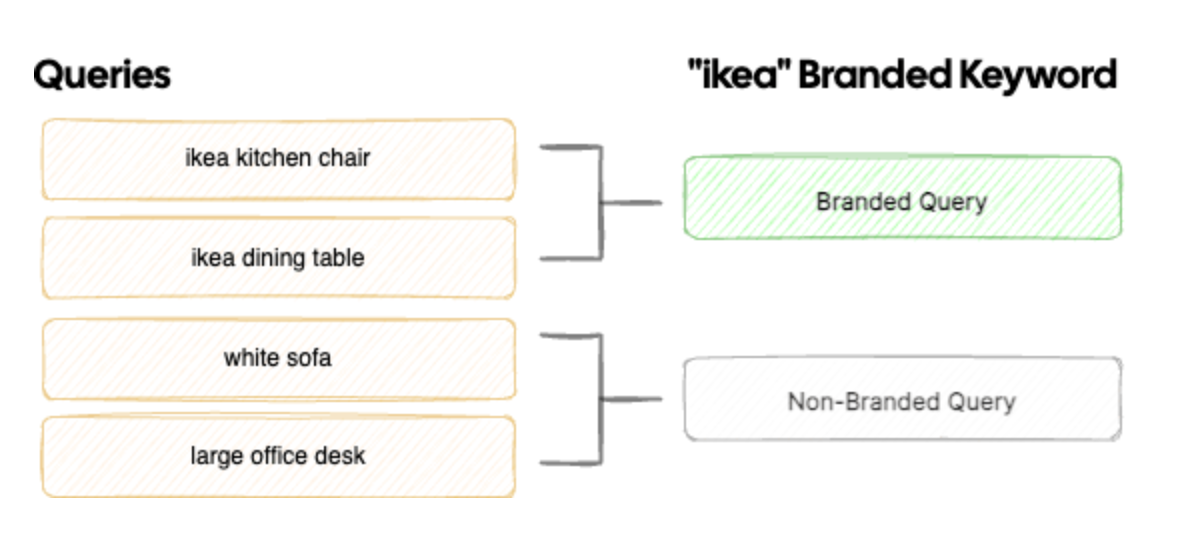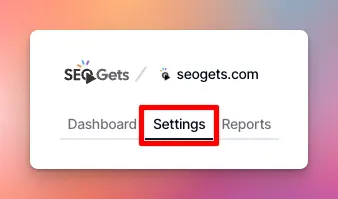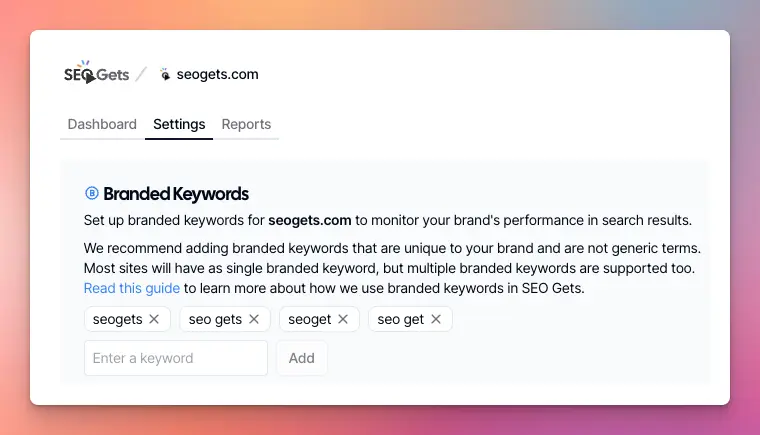How to monitor Branded and Non-Brand traffic with SEO Gets
Learn how to setup and use Branded Keywords in SEO Gets to monitor your brand's popularity and non-brand organic traffic.

It’s important for site owners to understand how their site is performing in search engines for both branded and non-branded queries. In case you’re not familiar with these terms, here’s a quick explanation:
What is branded search traffic?
Branded search traffic refers to the visitors who come to your website after searching for terms that include your brand name or variations of it. This type of traffic consists of users who are already familiar with your brand and are specifically looking for your company, products, or services.
Branded keywords are search terms that include your brand name or variations of it. These keywords typically have higher conversion rates as they target users who are already familiar with your brand.
What are some examples of branded keywords?
Here are some examples of branded keywords:
- “Nike running shoes”
- “Apple iPhone 13”
- “Amazon Prime membership”
- “Starbucks menu”
- “Tesla Model 3 review”
- “Adidas Ultraboost”
- “Microsoft Office 365 pricing”
- “McDonald’s near me”
They’re helpful for capturing traffic from users who have brand recognition and are potentially closer to making a purchase decision.
What are some examples of non-branded keywords?
Non-branded keywords are search terms that don’t include your brand name. These keywords are often more competitive but can help you reach a broader audience who may not be familiar with your brand yet.
Here are some examples of non-branded keywords:
- “best running shoes”
- “how to bake chocolate chip cookies”
- “affordable smartphones”
- “digital marketing strategies”
- “organic pet food”
- “home office furniture”
- “beginner yoga poses”
- “car insurance comparison”
See how these keywords focus on products, services, or information without mentioning any specific brand. They’re essential for attracting new customers who are searching for solutions rather than a particular company.
Why is distinguishing branded search traffic important?
A high volume of branded queries is a good sign that your brand is becoming more popular. On the other hand, non-branded queries are a good indicator of how well your site is performing in search engines for general topics.
It also allows you to measure brand awareness. The volume of branded searches can indicate how well-known your brand is becoming over time.
This is a factor that I believe Google is prioritizing more and more over time.
1. How to set up your branded keyword report in SEO Gets
In this guide, I’ll show you how to use SEO Gets to monitor your site’s branded and non-branded performance on Google.
First select the site you want to track keywords for, and click on the Settings tab.

Then click on the Settings tab and find the Branded Keywords section. Next simply enter your keywords, and click Add. You can add as many keywords as you want, and change them at any time.
For seogets.com, I added a few different spelling variations since some people will add or remove the space or s in our brand name.

2. How to filter by either Branded or Non-Branded traffic
After setting up your keywords, you’ll find the Branded Queries options inside the filter dropdown in your dashboard.

The first button represents branded queries, and the second one represents non-branded queries. You can filter your data by branded only, non-branded only, or both.
Click on either of them to filter the dashboard to only show content related to that type of query. All the widgets in the dashboard will be updated to reflect the new filter.
That’s it! You can now monitor your site’s branded and non-branded performance over time, and see how your brand is growing in popularity.
✨ Interested in simplifying your SEO analytics workflow? Try SEO Gets for free.
